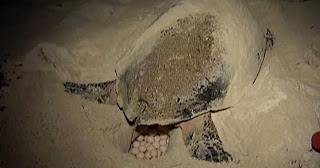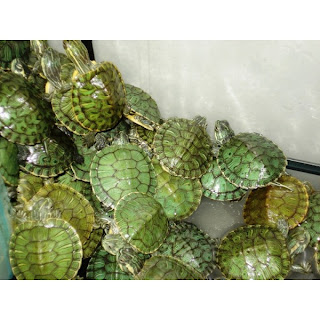Las tortugas son ovíparas, es decir, las hembras ponen huevos. Sin embargo, no los cuidan; los huevos se incuban por el calor que irradia el sol. Cuando eclosionan, las crías ya están desarrolladas.
Tienen las patas cortas y robustas, terminadas en uñas fuertes, que les permiten avanzar en cualquier tipo de terreno. Son animales que caminan mucho y, por ello, necesitan tener espacio para recorrer.
Como todo reptil tienen el cuerpo cubierto por escamas. No tienen dientes, pero poseen unos potentes maxilares y una boca recubierta por una lámina córnea.
Las tortugas son terrestres son herbívoras y obtienen el agua de sus alimentos. Por su parte, las que viven en los mares suelen ser carnívoras y se alimentan de medusas, moluscos y crustáceos.
Cuando las temperaturas bajan, las tortugas excavan madrigueras en la tierra para hibernar. Sus cuerpos cambian: disminuyen sus funciones vitales, baja su temperatura y entran en un letargo que dura todo el invierno.
El cuello de las tortugas se retrae al interior del caparazón con un movimiento semejante al del plegado de un telescopio.
Su cuerpo está protegido por un caparazón formado por placas óseas cubiertas por una capa córnea. La parte posterior tiene forma abombada y la anterior, llamada peto, es plana. Ambas partes están unidas para proteger los órganos internos y preservar la temperatura del cuerpo. Las vértebras y las costillas se fusionan en el interior de esta estructura para hacerla más resistente.
Muchos de vosotros seguro que habéis adoptado como mascotas a las pequeñas tortugas Trachemys. Unas tortuguitas que habitan en charcas, ríos y arroyos de poca profundidad. Como son semiacuáticas pasan una parte del día en el agua y otra en tierra, tomando el sol.
Los aficionados a este tipo de animales debéis preparar tanques en los que haya espacio suficiente para que naden a sus anchas y además reciban bien la luz del sol.
The turtles are oviparous, that is, the females lay eggs. However, do not care, the eggs are incubated by the heat radiated by the sun. When they hatch, the young are already developed.
They have short powerful legs, strong nails terminated, allowing them to move in any terrain. They are animals that walk a lot and therefore need to have room to roam.
Like all reptiles have the body covered with scales. They have no teeth, but possess some powerful jaws and a mouth covered with a sheet cornea.
The turtles are terrestrial are herbivores and obtain water from their food. Meanwhile, those living in the seas are usually carnivorous and feed on jellyfish, molluscs and crustaceans.
When temperatures drop, tortoises dig burrows in the ground to overwinter. Their bodies change: decrease its vital functions, low temperature and come into a lethargy that lasts all winter.
The turtle neck is retracted into the shell with a movement similar to the folding of a telescope.
His body is protected by a shell composed of bony plates covered by a horny layer. The back has a convex form and above, called dungarees, is flat. Both parts are joined to protect and preserve the internal organs of the body temperature. The vertebrae and the ribs merge into the interior of this structure to make it more resilient.
Sure many of you have adopted as pets for small turtles Trachemys. Some turtles that live in ponds, rivers and shallow streams. As are semiaquatic spend part of the day in the water and another on land, in the sun.
Fans of this type of animal must prepare tanks where there is enough space for them to swim at ease and also receive good sunlight.



No hay comentarios:
Publicar un comentario